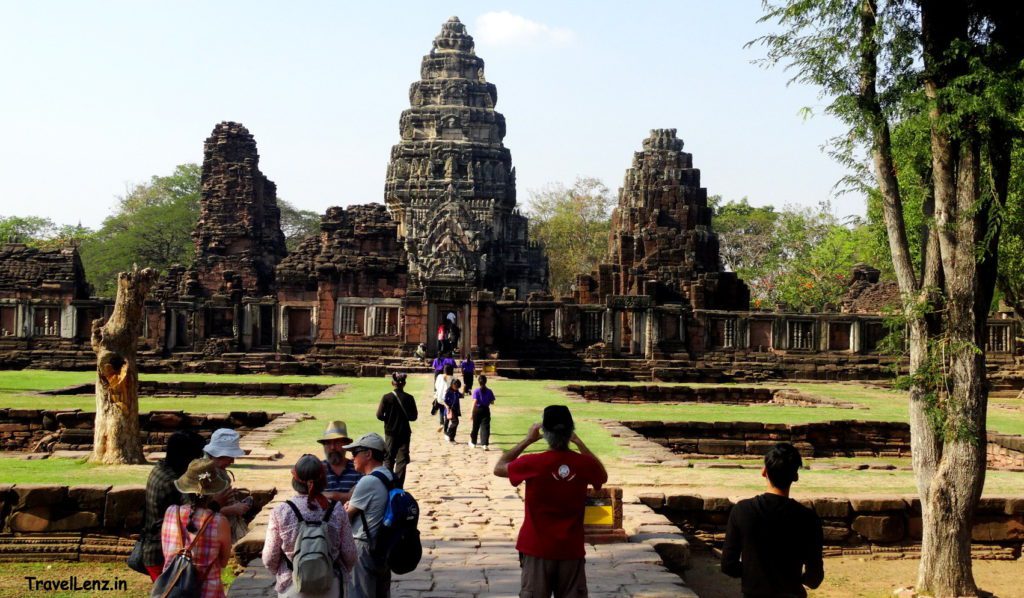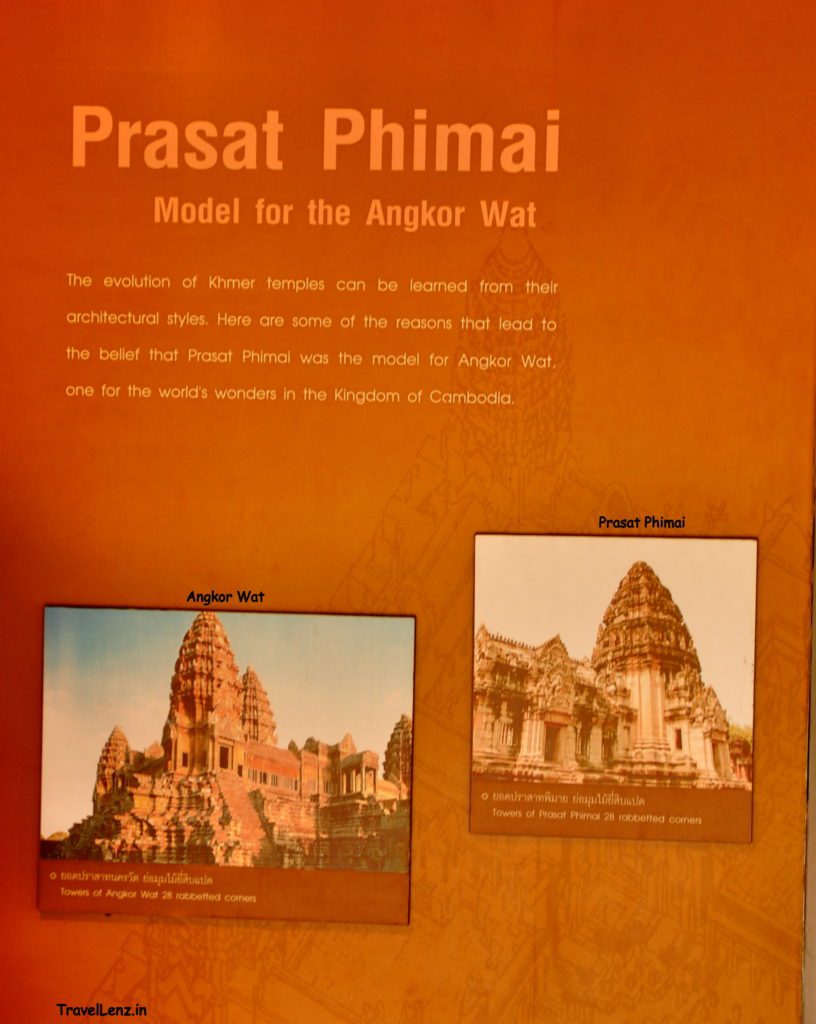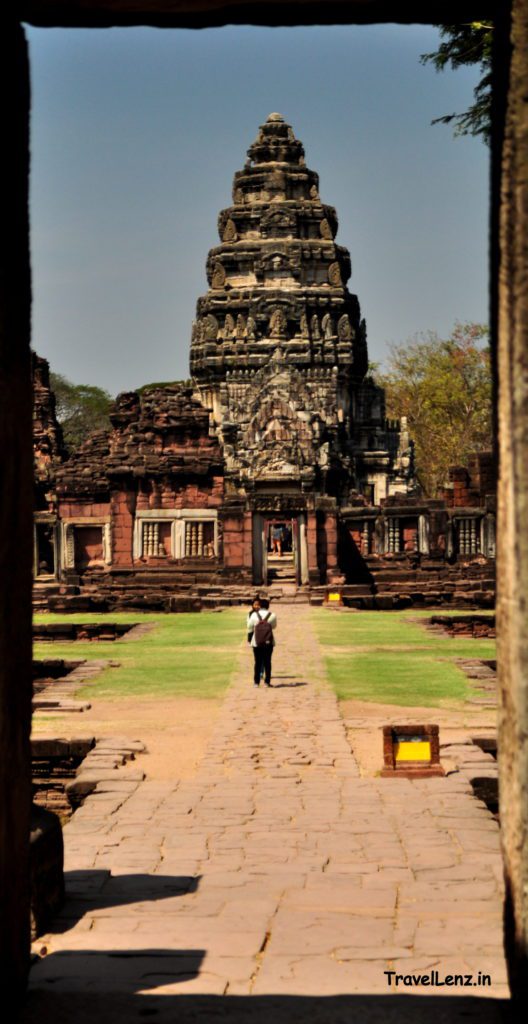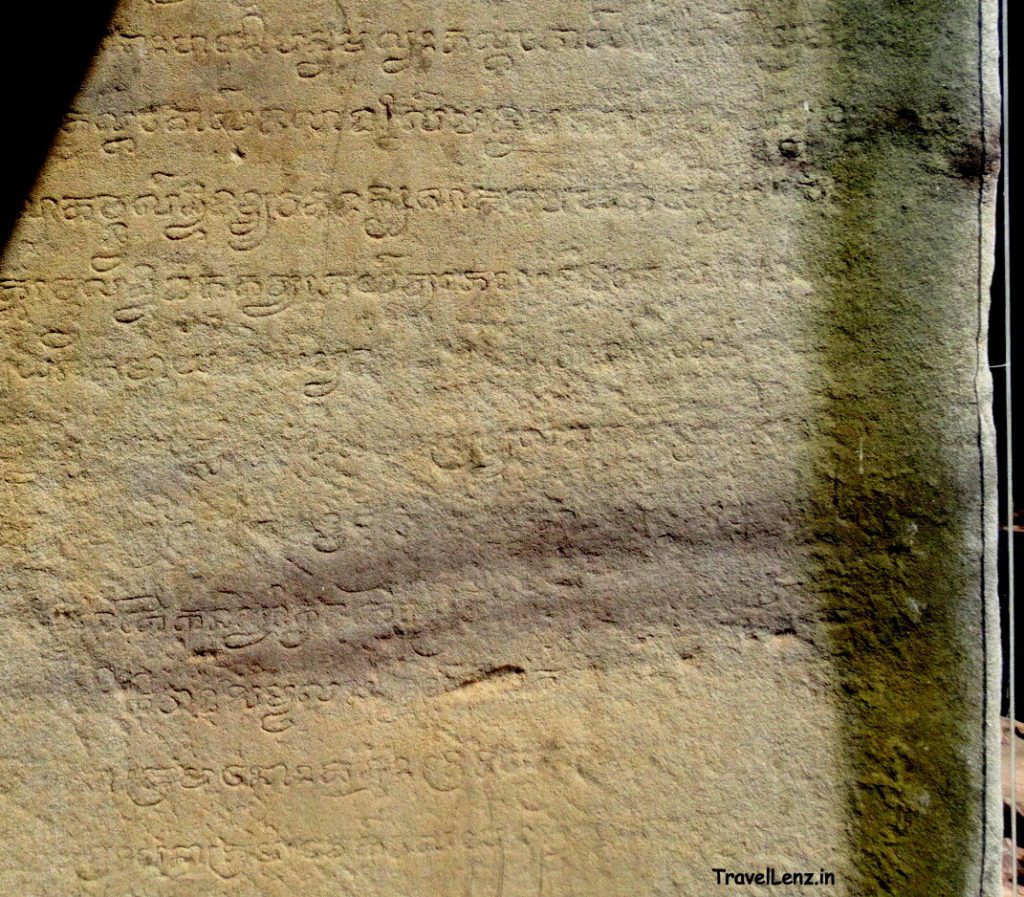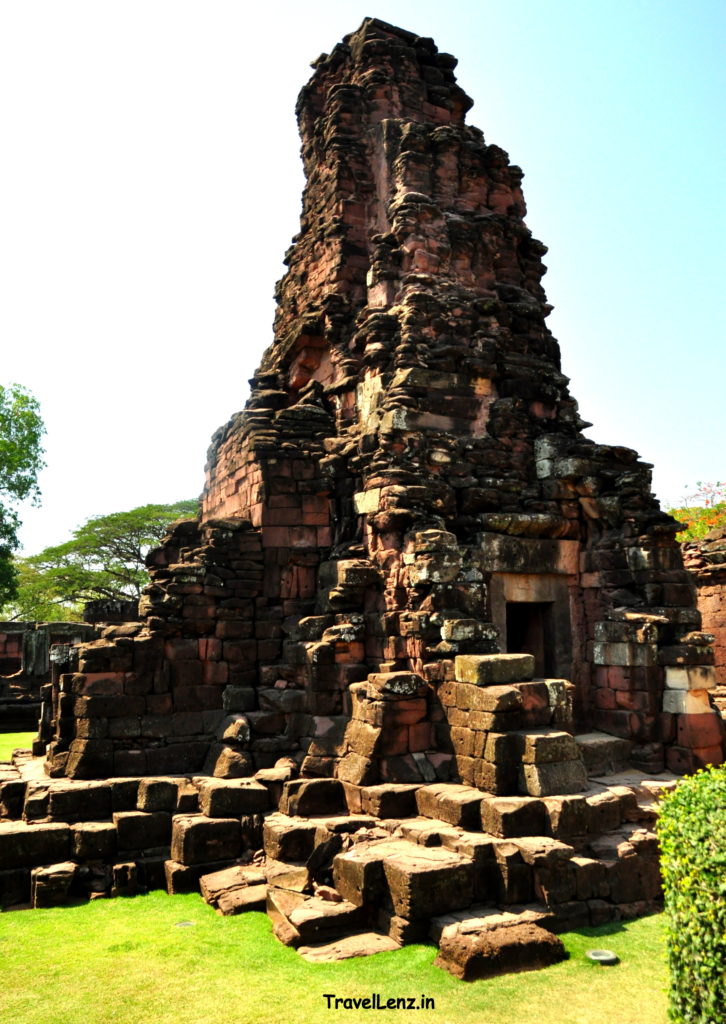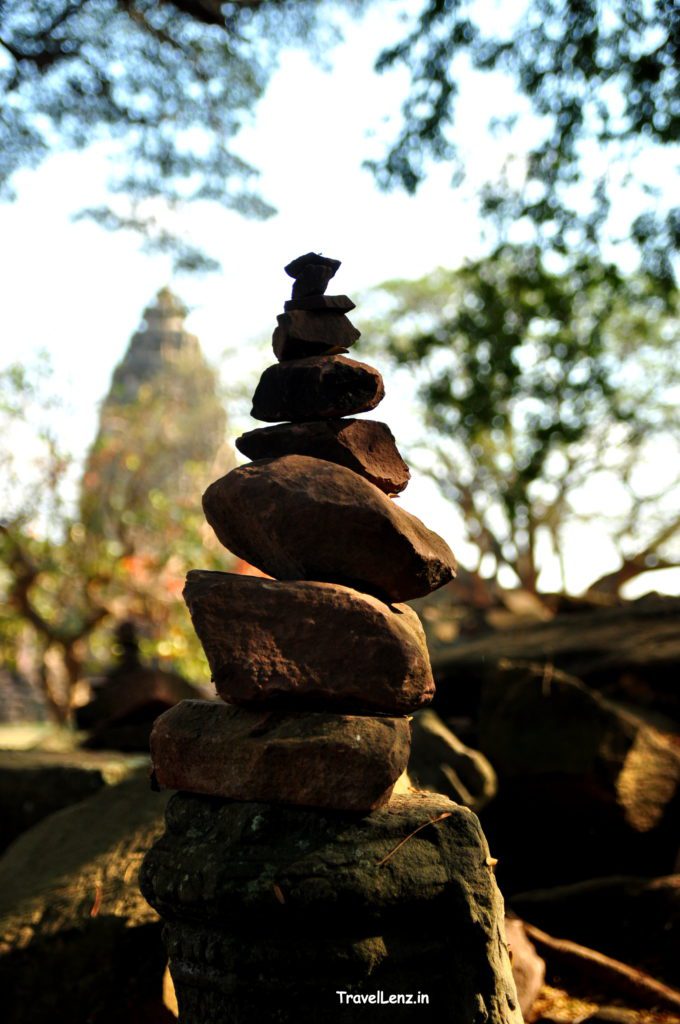Last Updated on October 5, 2021
When the Khmer Empire was at its peak, there existed an imperial road that started from Angkor Wat and connected the capital city with the other smaller provinces. The ancient route was often referred to as the Royal Road (or Dharamsala Route) and was dotted with shelters, hospitals and many other temples. The ultimate and final destination for the travelling pilgrims and traders was Phimai. The ancient town of Phimai is now centered around an 800-year-old Khmer temple – Prasat Phimai.
The spectacular ruins of Phimai predate Angkor Wat and some even think that Phimai must have been a model for Angkor Wat. Though not comparable to the sheer size and grandeur of Angkor Wat in Cambodia, Phimai holds its own of having one of the finest and largest surviving Khmer temple complexes in Thailand. And we were going to check it out.
Destination Phimai
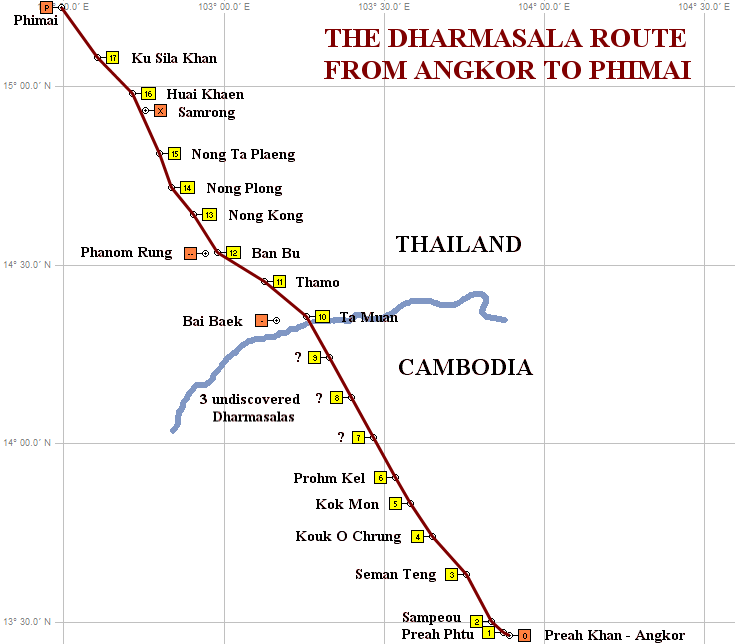
After our brush with the temple complexes at Phanom Rung and the nearby Muang Tam, we were on our way on a more modern road to Phimai.
We started our journey early in the morning, after all, Phimai is located about 160 km further north-east of Nang Rong. Our plan was to catch a bus from Nang Rong to Nakon Ratchasima, 100 km away, check into our hotel and then proceed to Phimai, which was a further 60 km away.
So, by 7.00 am we were out of the Park hotel and on our way to Nang Rong bus station. By 7.30 we were bundled into a minivan. Minivans are an alternative transport option for buses in Thailand.
By 9 am we had reached Nakhon Ratchasima or Khorat. Our hotel, Romyen Garden Place, was a 20-minute walk from the bus stop. After checking in and freshening up, we were on our way in a tuk-tuk to Khorat’s Bus Terminal 2. By 10.30 we were inside a bus on our way to Phimai. 12.30 we had reached Phimai.
Phimai Historial Park
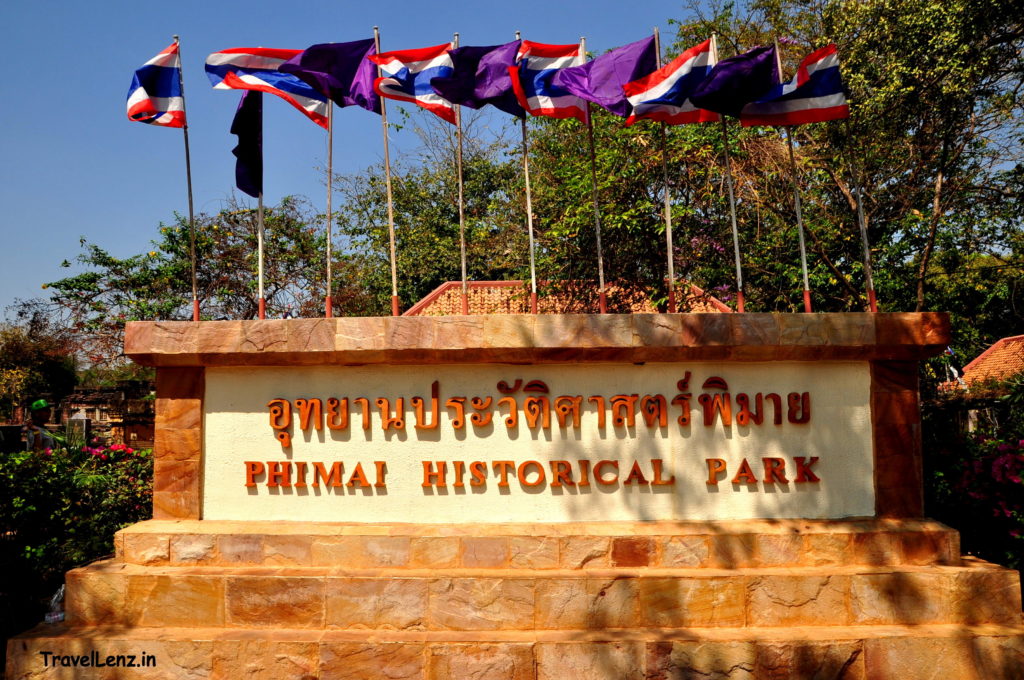
Prasat Hin Phimai is part of the well-preserved Phimai Historical Park – and when we say well-maintained, it actually looks like a park, literally, with carefully cut hedges and well-manicured grass.
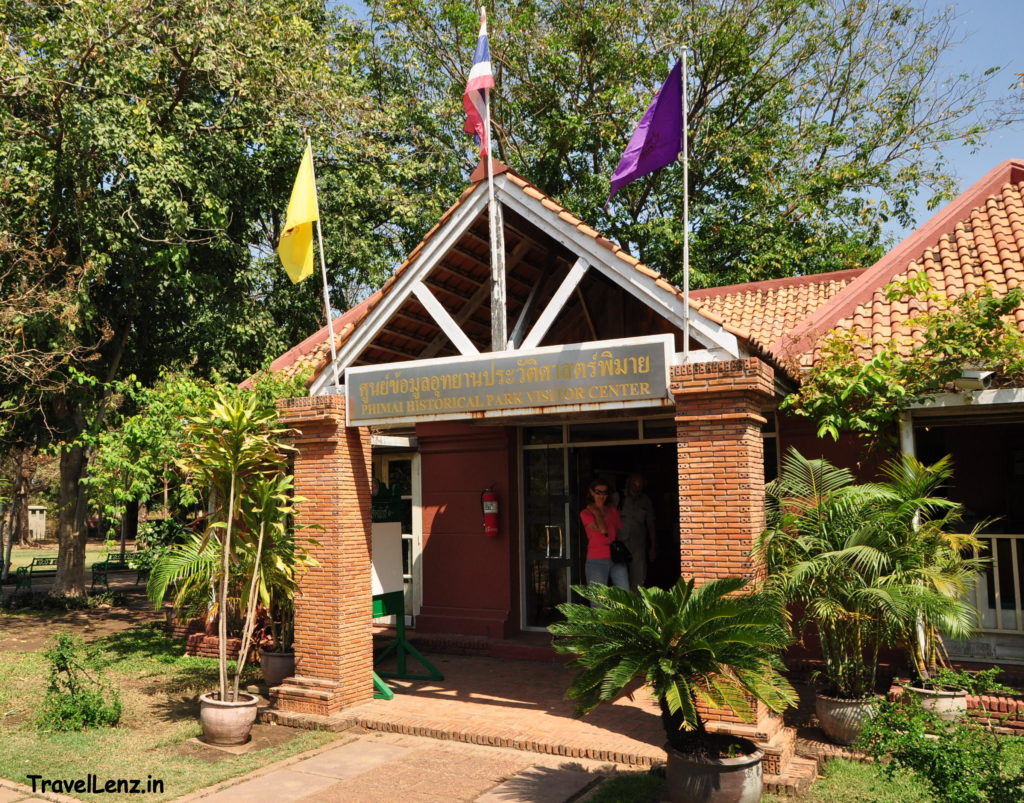
As we entered the gates, on the right side was a tourist information center that had souvenirs and books on Thai culture and heritage. Pamphlets in various languages were available for free that had detailed information on the architecture and history of the temple. These pamphlets turned out to be very informative as we had not hired a guide.
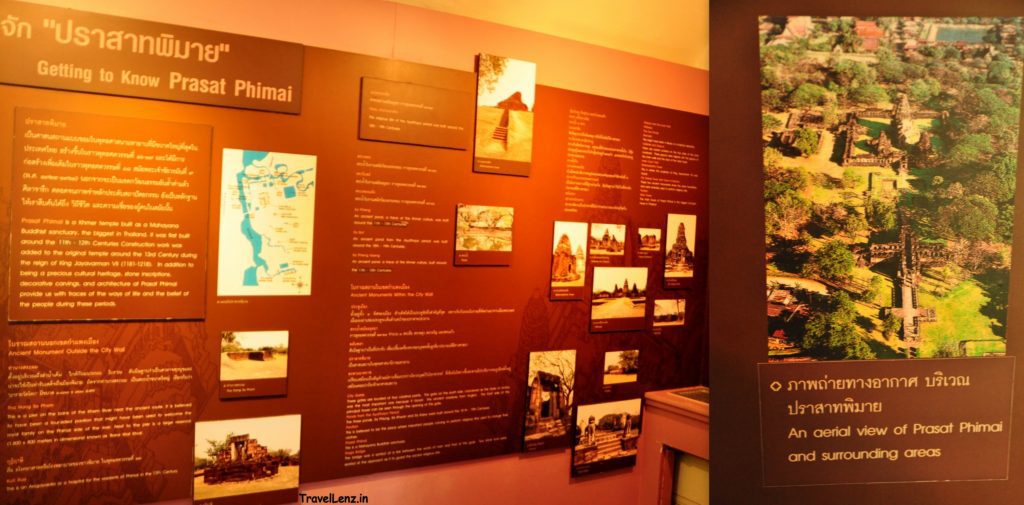
There were charts put up at the tourist information center on the various facts about Phimai, tracing the places’ past history. Other photos included the plan of Prast Phimai and the towers, carvings and other details that gave us more insight as to what we could expect inside. Also on exhibition were the mortal remains of ancient men, as well as a few tools and artifacts found at the Phimai river basin.
To validate the theory that Prasat Phimai must have been the model for Angkor Wat, there were a few photographs put up at the information center. And the temple complexes did resemble a lot.
Read more: Angkor Wat – Cambodia’s famous UNESCO World Heritage Site.
Khlang Ngoen
From the tourist information center we walked towards the temple complex. Remains of a building called Khlang Ngoen was found on our left. In Khmer, Khlang Ngoen means treasury. A stone marker at the entrance said that the building was used by the King and his entourage to change into their ceremonial clothes before entering the temple grounds.
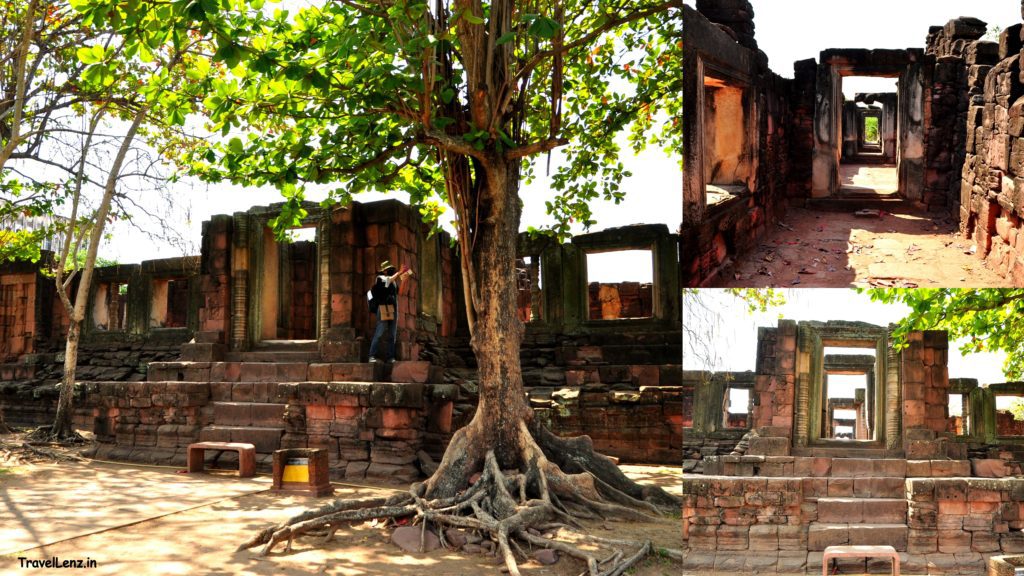
Naga bridge
We walked forwards to reach an elevated Naga bridge. We had already been familiar with these snake bridges; had come across them at Phanom Rung and Muang Tam. The Nagas symbolically represent the passage from earth to heaven. The bridge was in the form of a cross-shaped terrace with its balustrades ending in fierce seven-headed Nagas. At the foot of the stairs were a pair of guardian lions.
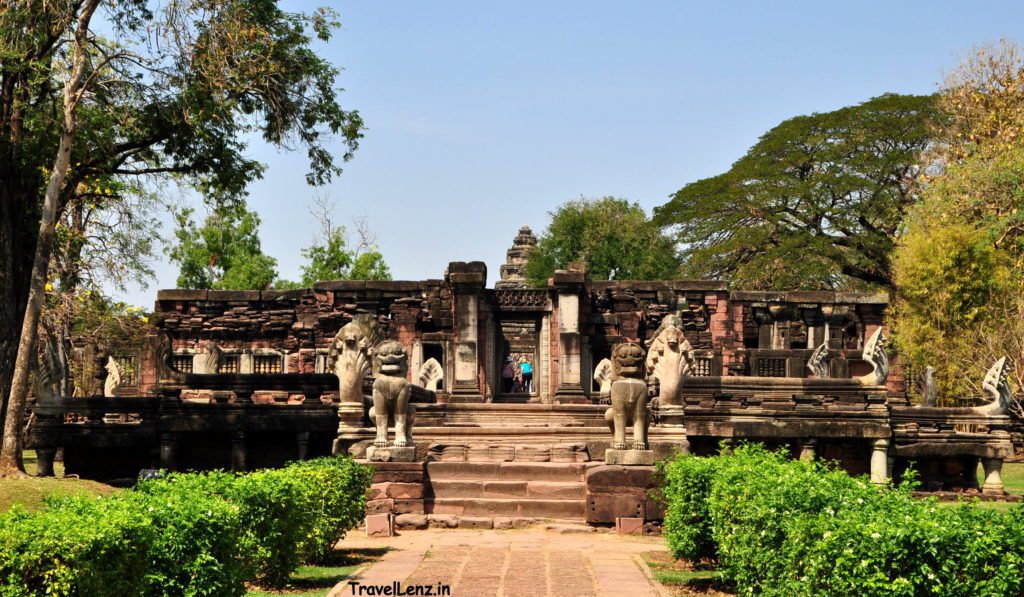
Outer southern gopura
From the Naga bridge, we walked ahead and passed through an arched gateway – the outer southern gopura. For whatever reason, Phimai faces south and not east like most Khmer temples. So, being the main entrance to this sanctuary, the southern gopura was larger than the other three gopuras, on the west, east and north sides. A roof may have existed as we found large free-standing pillars. There were a group of dancing figurines known as the dancing ‘dakini’s,’ or Tantric Buddhist goddesses on top of the lintel.
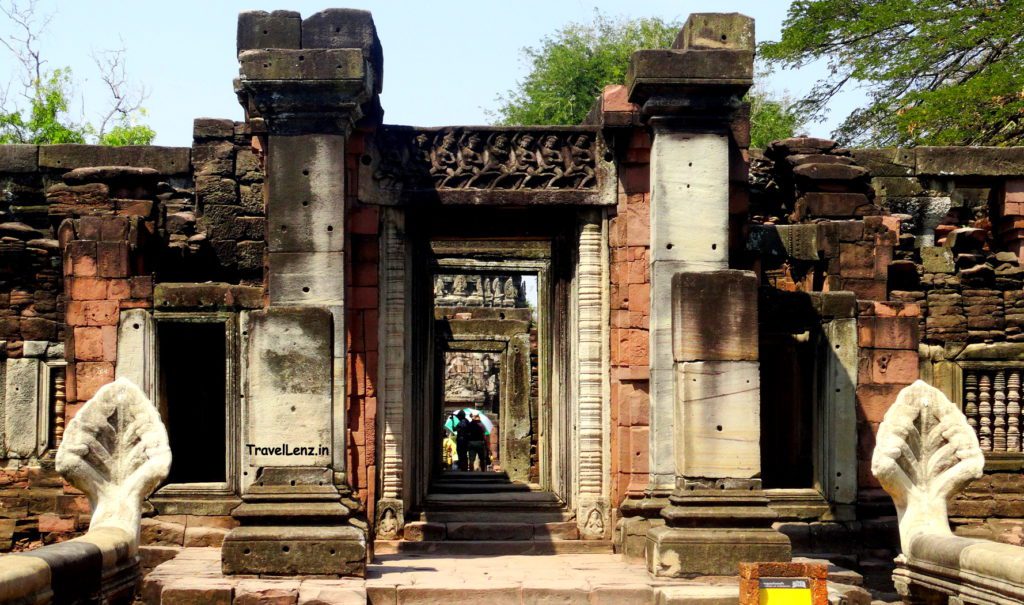
Outer enclosure
Beyond the southern gopura was a raised walkway that was connected to the main sanctuary. There were a series of rectangles where former structures once stood. Scholars say that a Buddhist Vihara (monastery) stood here. A few scattered post holes and broken roof tiles indicated that this walkway must have been covered too.
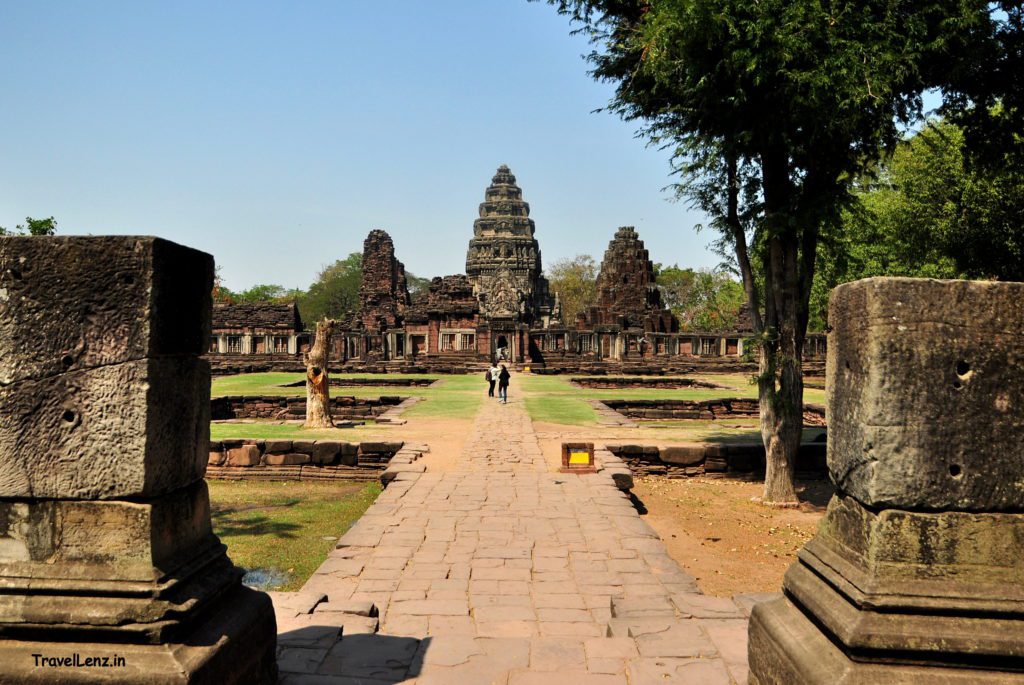
The main sanctuary was visible from the walkway – a tall main shrine and a few smaller towers. The temple was initially built as a Hindu shrine and later converted to a Buddhist sanctuary, just like Angkor Wat. The tower of the main sanctuary is widely assumed to be a model for the towers of Angkor, which was built several years later. Someone who has already visited Angkor Wat in Cambodia would recognize the similarity.
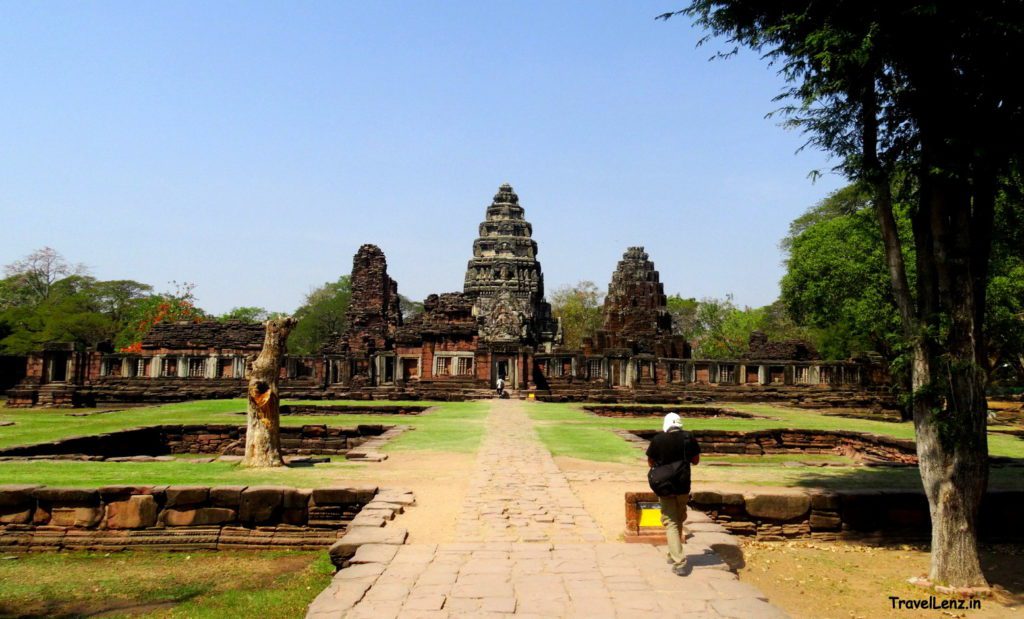
Read more:
Inner southern gopura
We had to pass through the inner southern gopura before we entered the main sanctuary. Similar to the outer gopuras, there were three other gopuras found along the inner wall. This gopura was built of red sandstone, though the doors and windows looked a bit lighter in colour and made of white sandstone.
On the main entrance, there was a lintel that had an image of a demon holding a pair of elephants and standing on a “kala” image.
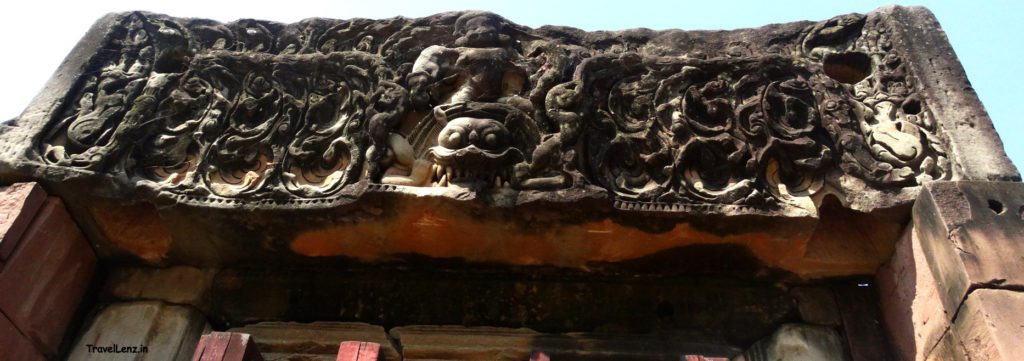
An inscription on the right side of an inner doorframe mentioned a date – 1112 AD. It also mentions the installation of a deity, Trailokyavijaya, by the local ruler Virendradhipativarman in 1108.
We also noticed a few holes in the bottom of the floor. These once held auspicious objects, like gold and gemstones.
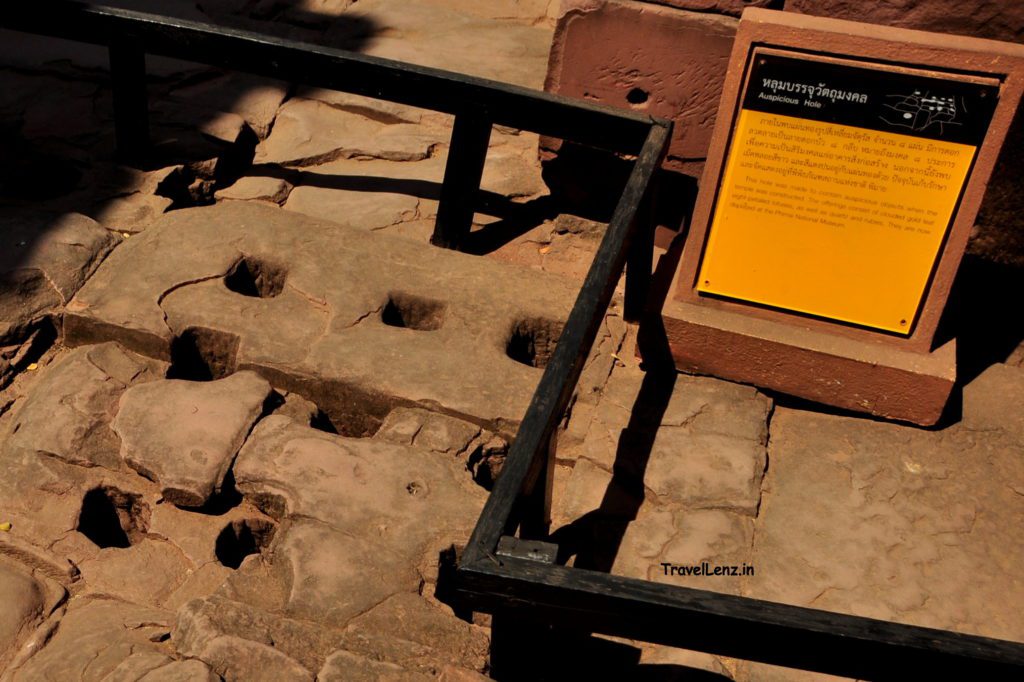
Central sanctuary
Entering the central courtyard through the inner southern Gopura entrance, the first structure you see is the 28 m-tall main shrine built of white sandstone and covered in intricate carvings.
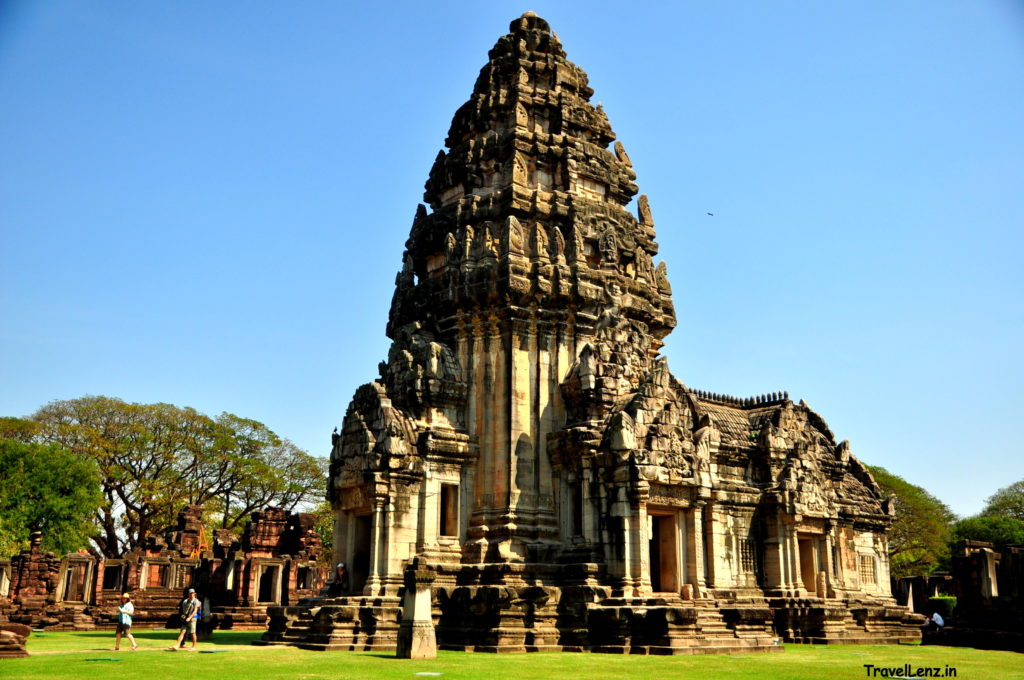
The tower has 5 tiers. As in most of the Khmer temples, the main sanctuary has three parts. An antechamber (mandapa) which connects to the inner sanctum (garbhagrha) via a short corridor (antarala).
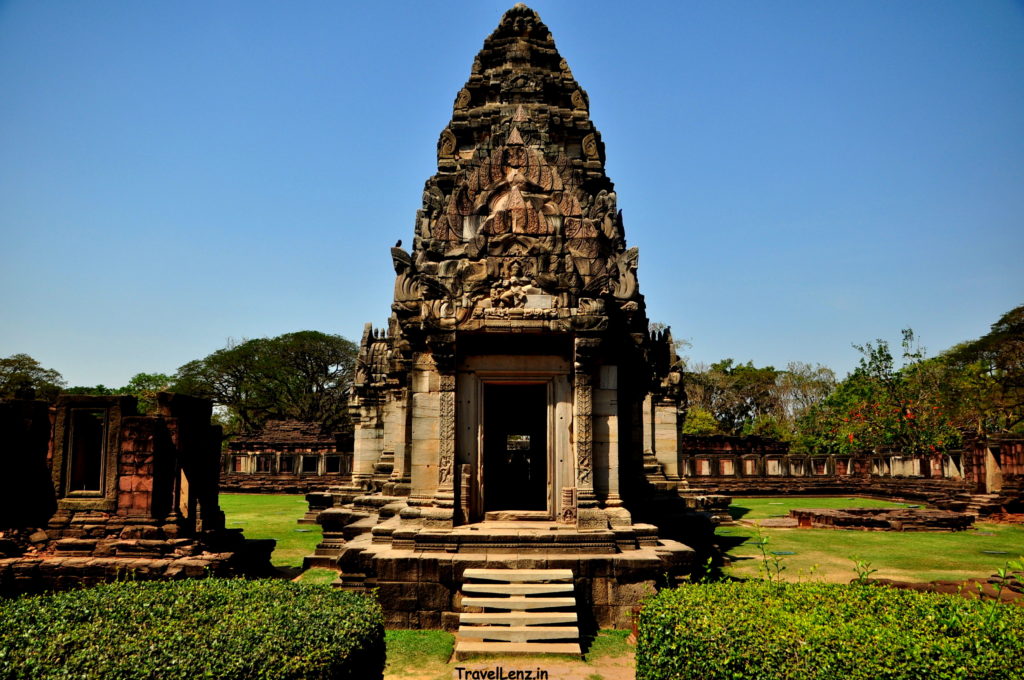
The pediments, lintels and walls of the main shrine had a lot of exquisite carvings. The pediment of the southern entrance was carved with the figure of a dancing Shiva.
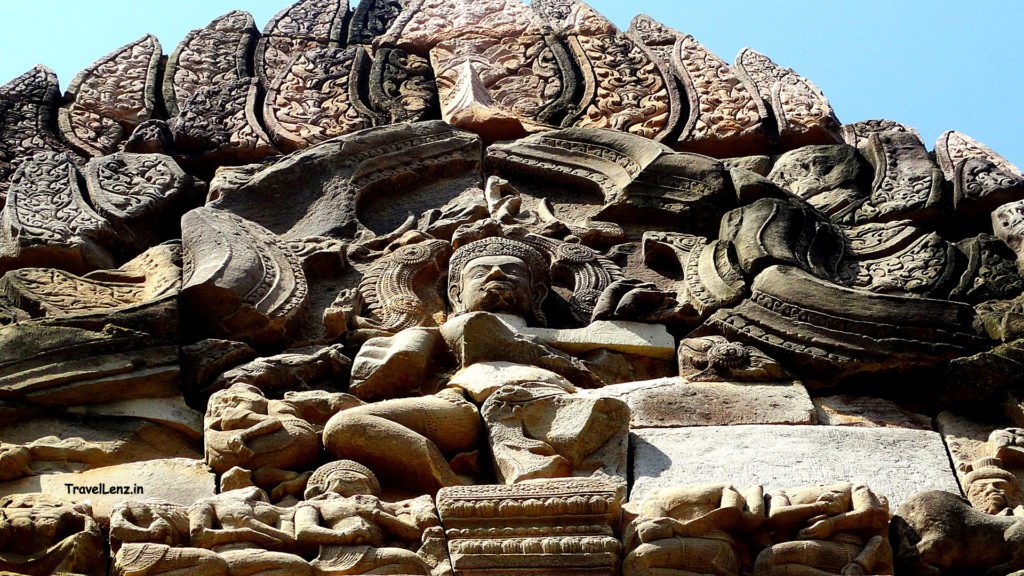
The carvings on the outer surfaces depicted scenes from Ramayana and Mahabharatha. The one below shows the monkey army with weapons in their hands.
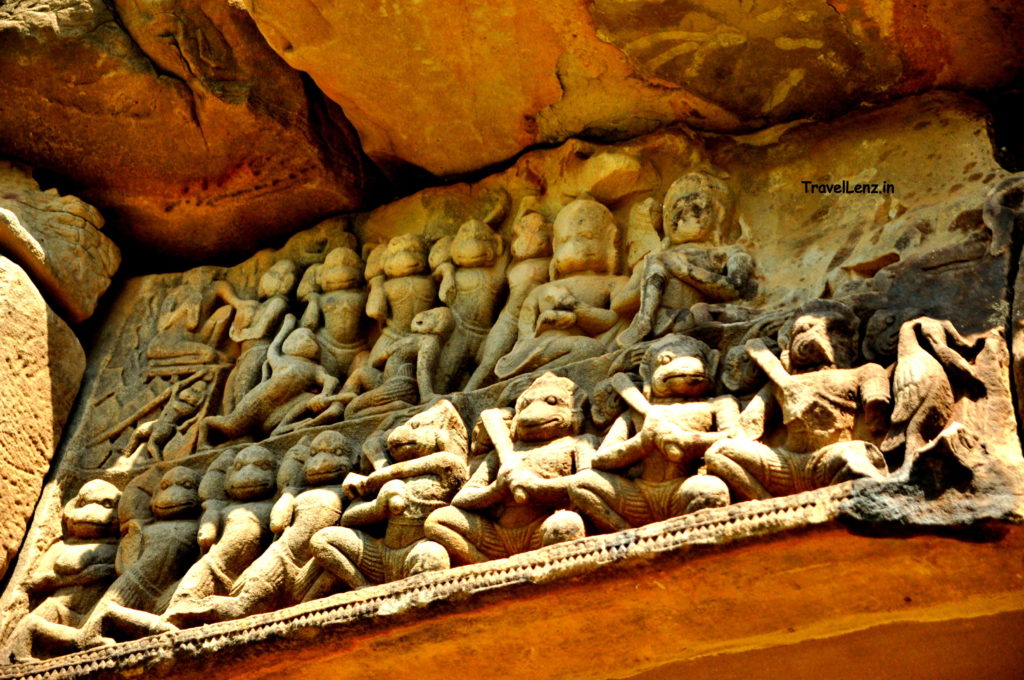
Another interesting carving shows the Trimurthi’s – Shiva, Vishnu and Brahma in three levels.
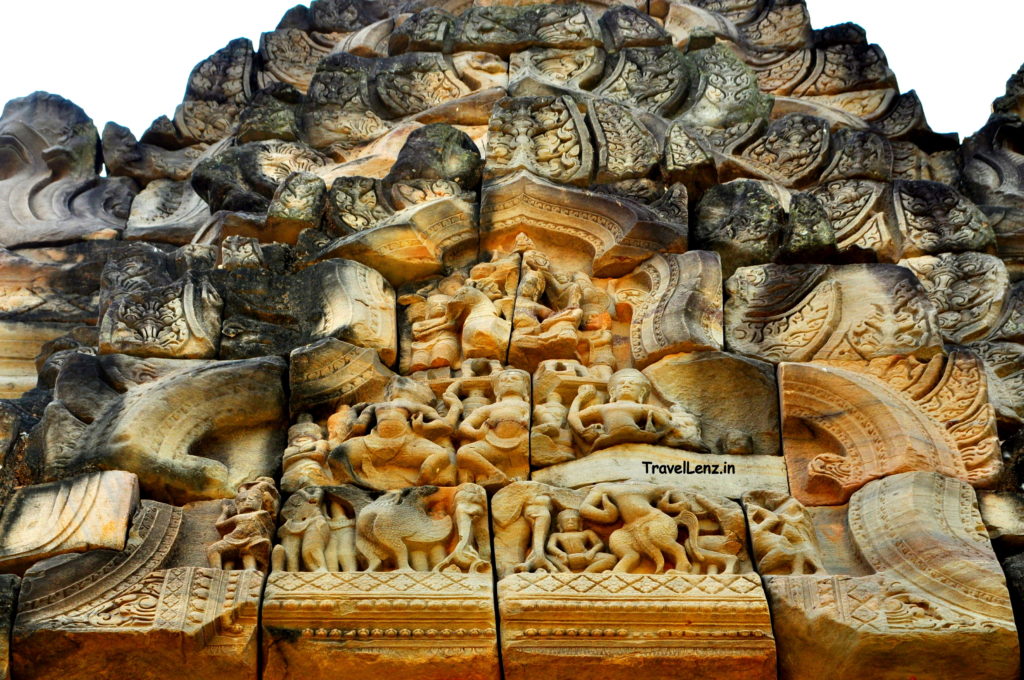
Another one shows Lord Rama wounded by a ‘Nagastra’ – a snake-shaped arrow. The monkey army can be seen kneeling near him and praying.
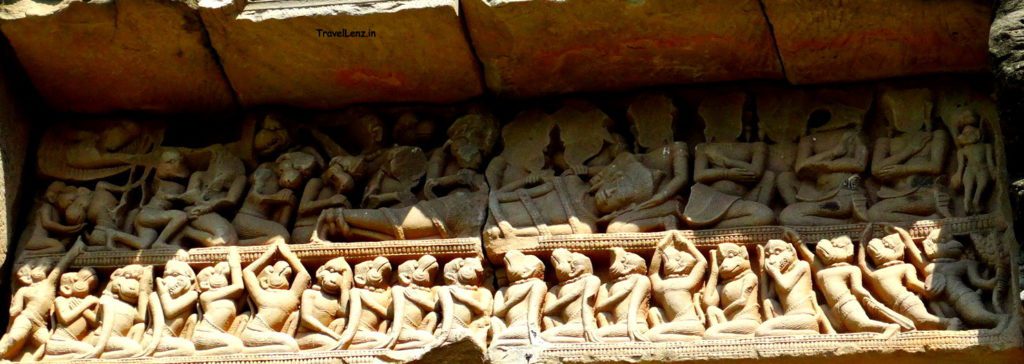
The upper panel shows scenes from a battle, while the lower panel shows Krishna killing his uncle Kamsa.
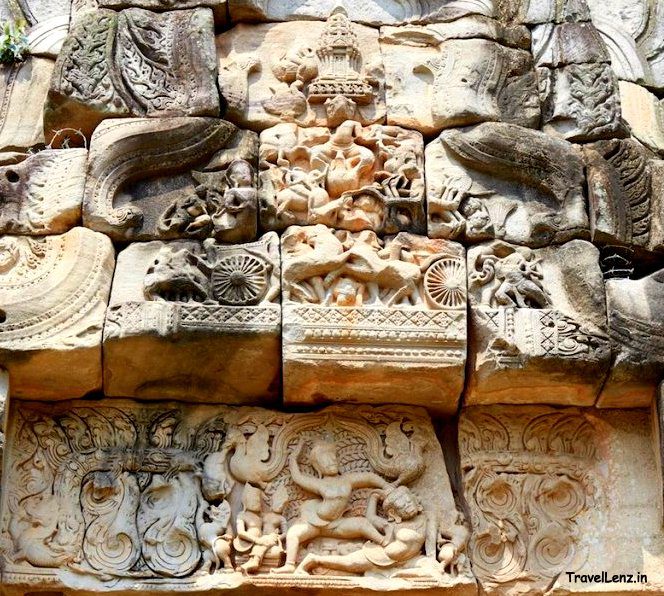
The main deity worshipped at Prasat Phimai is Adi Buddha, represented as a sitting Buddha protected by a snake, Muchalinda, who shelters the Buddha with his seven heads and raises him above floodwaters using the coils of his snake-like body.
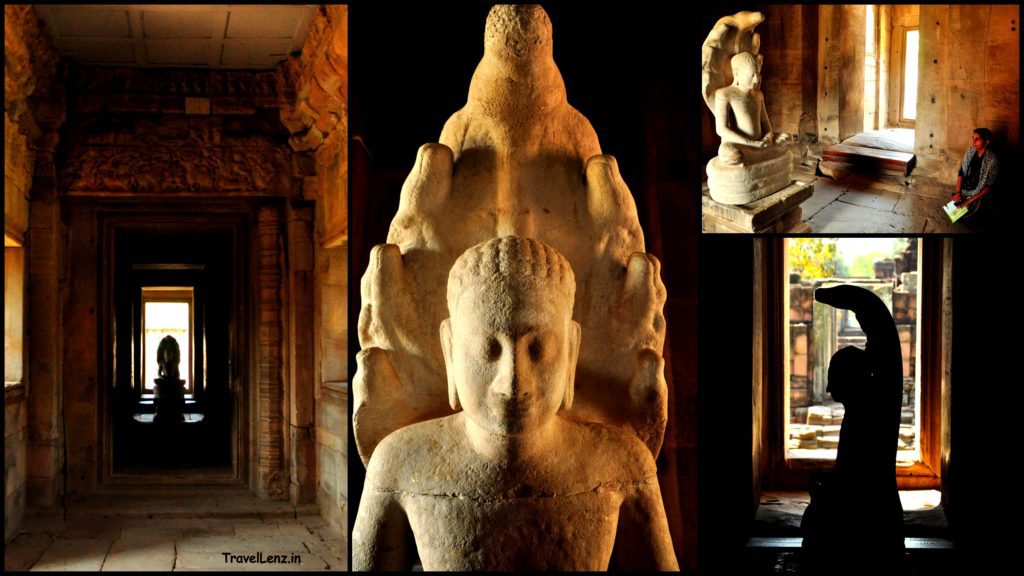
Prang Brahmathata
On the right side of the main sanctuary was a smaller tower, Prang Brahmathata. Built with laterite stone, this building has a stone sculpture of the Angkor King Jayavarman VII sitting cross-legged and protected by a naga. This statue is a reproduction, and the original is kept at the Phimai National Museum.
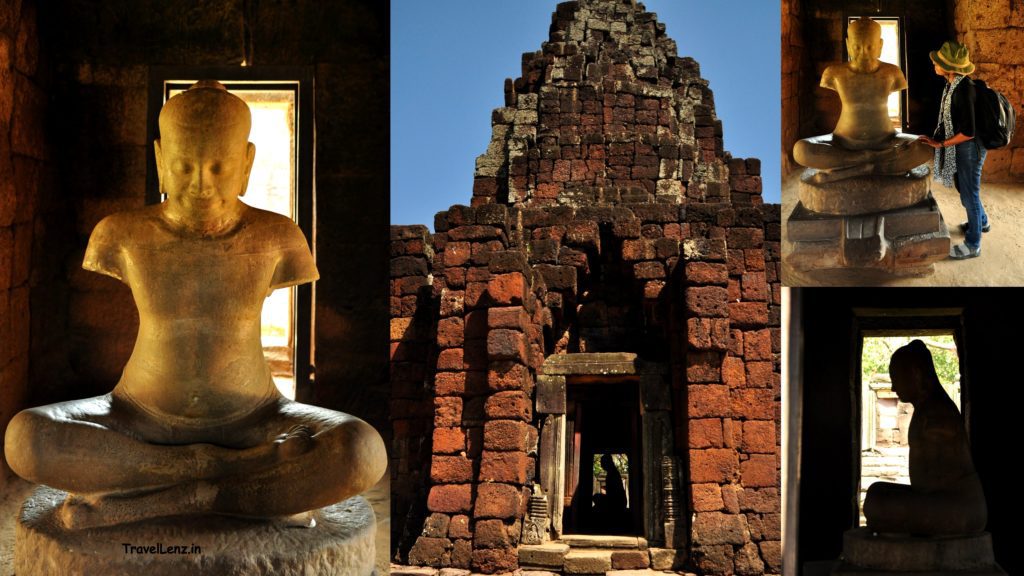
Prang Hin Daeng
On the left side of the main sanctuary was another laterite tower, Prang Hin Daeng.
There were also remains of two large rectangular buildings – libraries – which were almost in ruins. Only the basement and part of the wall remained.
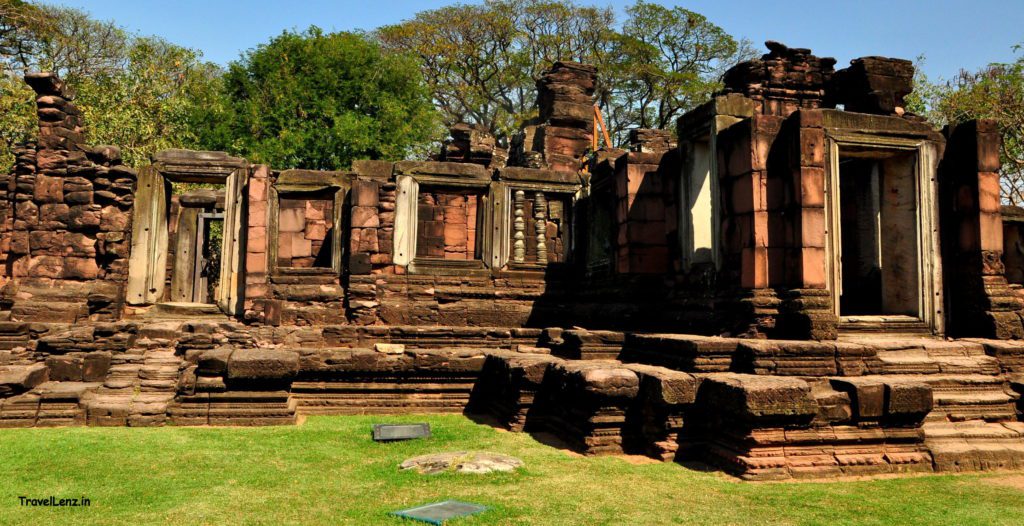
Though all of the carvings on the exteriors were that of Hindu deities,
the carvings on the Prasat’s interior were Buddhist in nature.
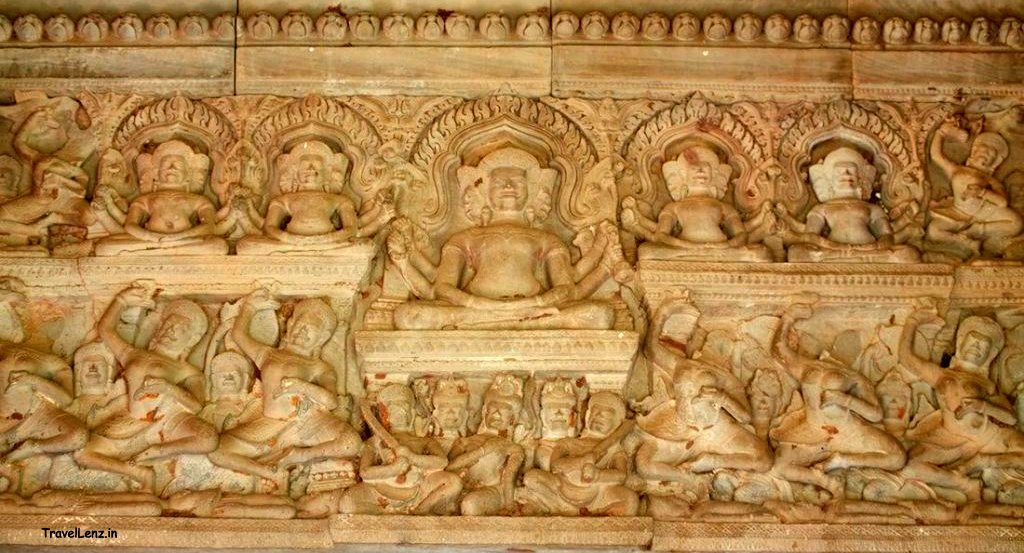
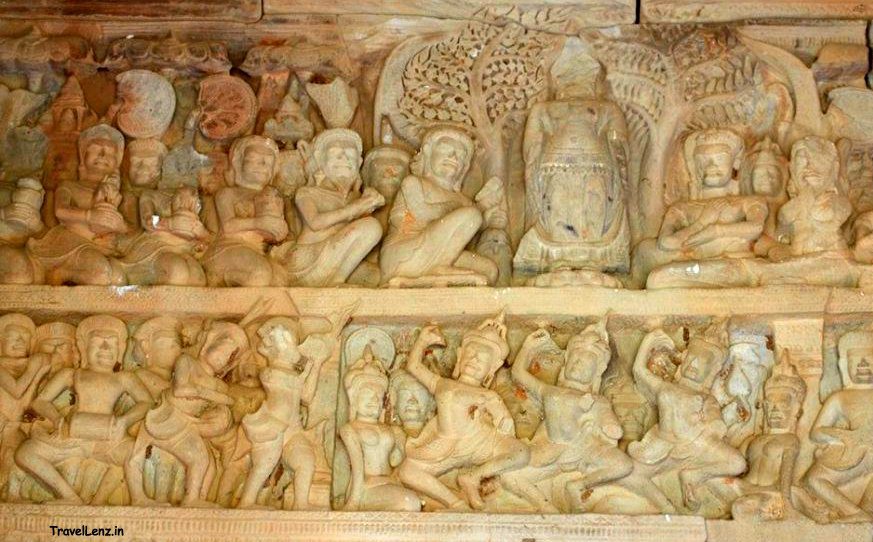
On the grounds, we found a laterite platform known as Phrab Phla that may have been used for some type of religious ceremony.
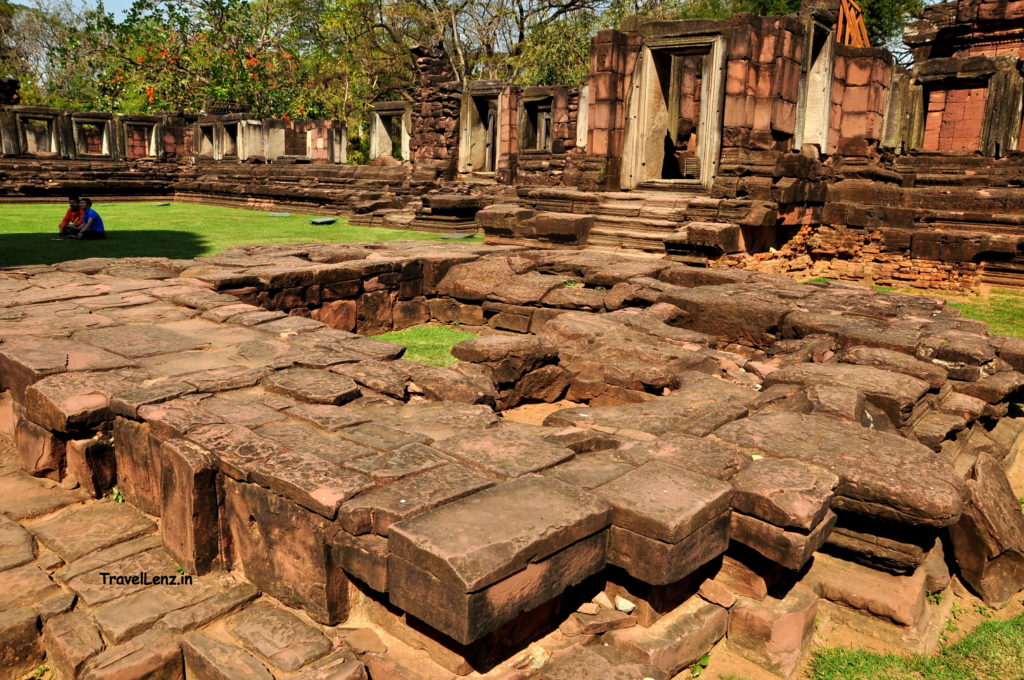
We walked from the inner enclosure through a gate to find an area that was used to display sculptures, stone fragments and lintel fragments that were excavated from within the grounds. There were many intricate pieces on display here. Our pamphlet mentioned that these pieces were too delicate to be placed in their original locations. The platform was shaded by several large trees, and it was a good place to sit and cool off for a while.
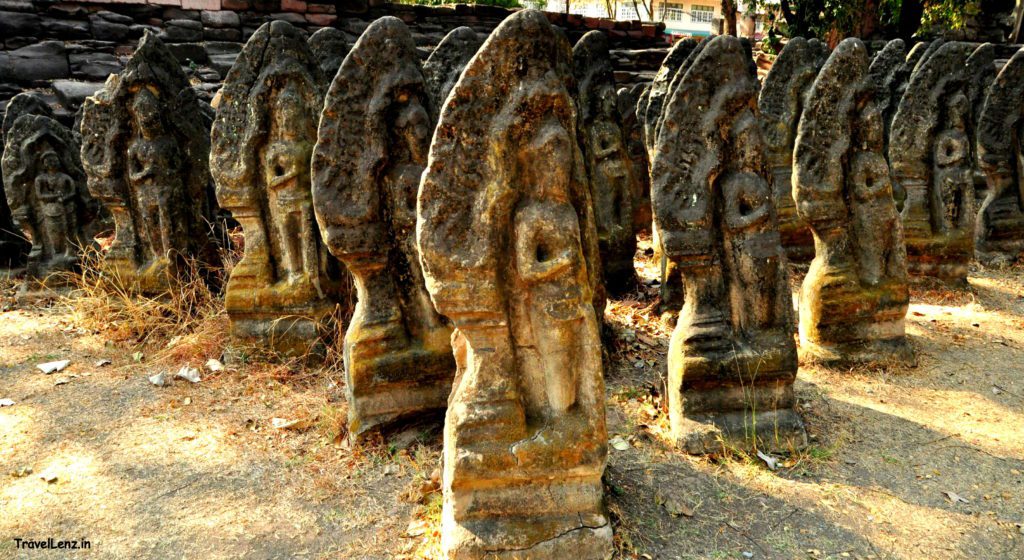
There was a small pond right behind the temple. The reflection of the temple on this pond made for an enchanting setting. We sat there for some time, taking in the beauty of the temple, watching a few bumblebees flitting from one flower to another, enjoying the cool shades of the tall trees.
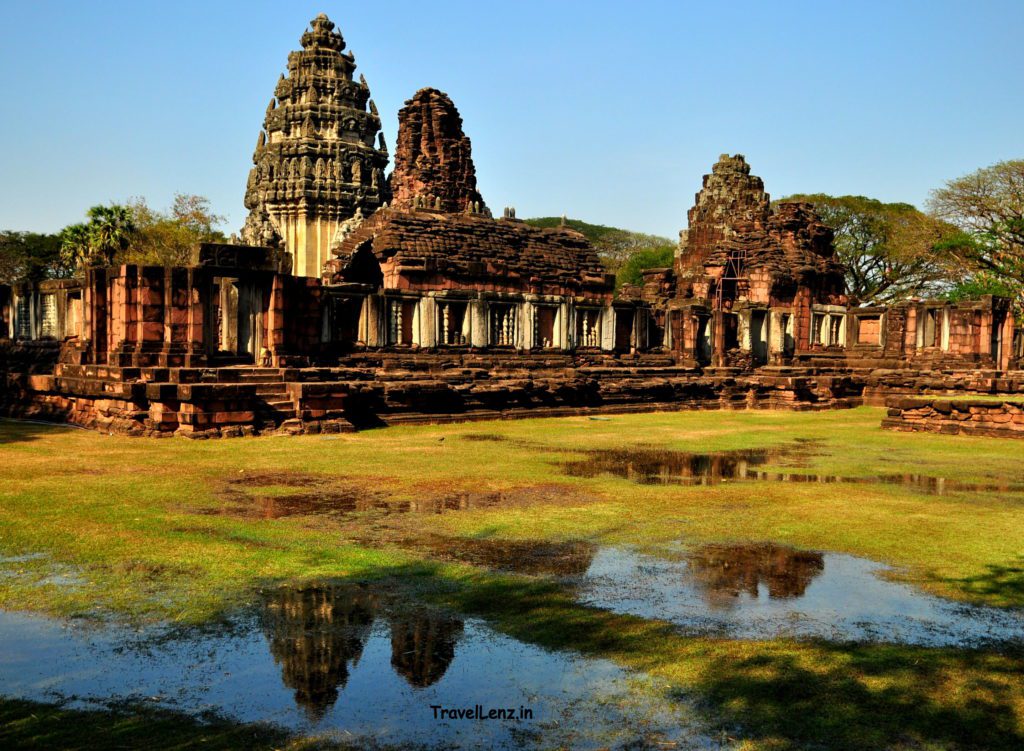
It was time for us to go back to Nakhon. As we stepped out of the gates we came across a small mound that had an almost collapsing brick structure on top. A marker at the base said it was known as Meru Brahmathat. We didn’t have much time to explore it as we had to catch a bus back to Khorat. Nevertheless, we took a few snaps from outside.
And tomorrow was going to be another jampacked day. Our next stop was
going to be the old Thai capital of Ayutthaya, a UNESCO World Heritage Site, and another town with impressive ruins.
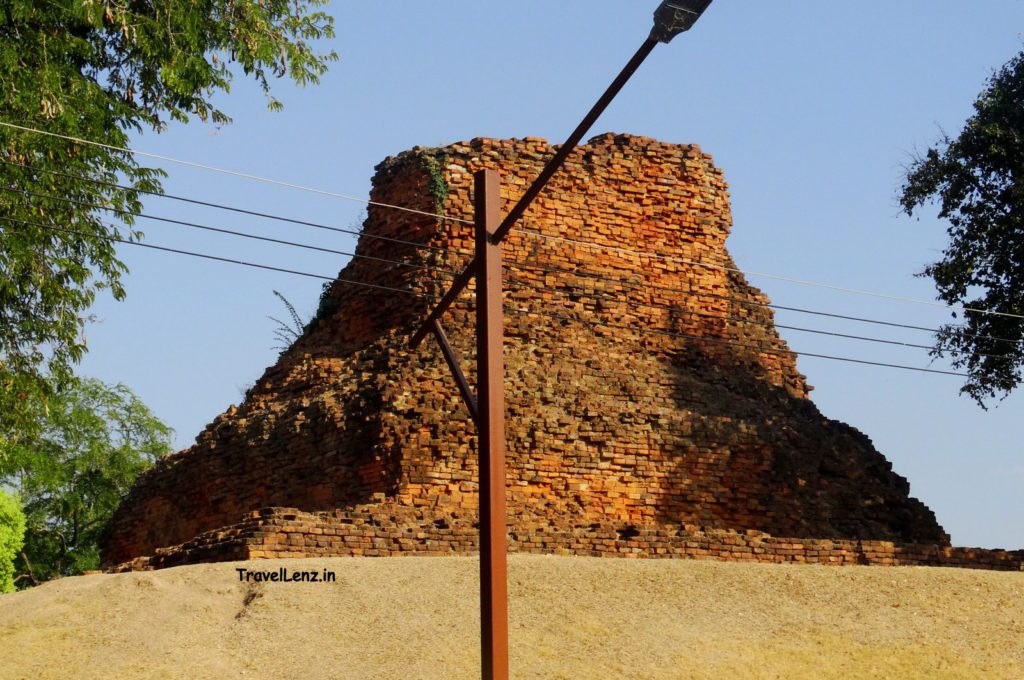
Good to know – Phimai Historical Park travel information
Phimai timings
The Phimai Historical Park is open from 7:30 AM until 6:00 PM. To view the ruins in near solitude, weekdays are the best. Be prepared for some boisterous crowd on weekends and public holidays.
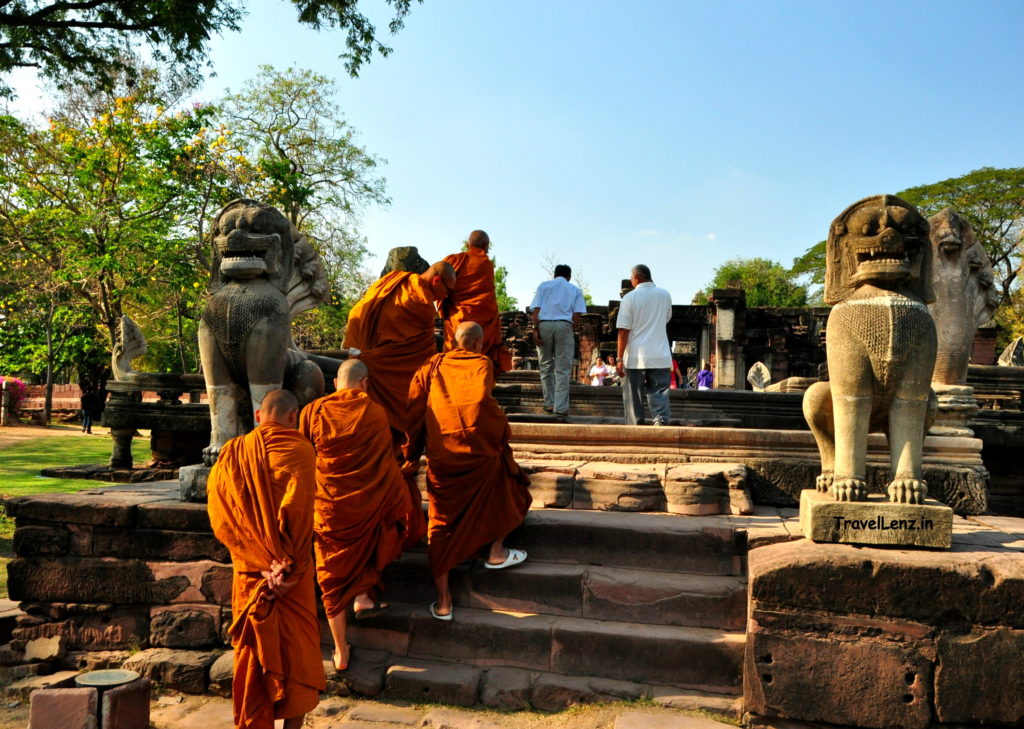
Entrance fees to enter Phimai
The ticket costs THB 100. Thai citizens only need to pay THB 30 for this ticket. Pamphlets are available free of cost at the ticket counter and tourist information centre.
How to reach
From Khorat – Buses run between Khorat city and Phimai town every 15 minutes. Khorat’s Bus Terminal 2 is the only place where you can catch a bus direct to Phimai. Buses depart from 05:00 to 22:00 for 50 baht and take an hour. In Phimai, the last bus to Khorat departs at 18:50.


